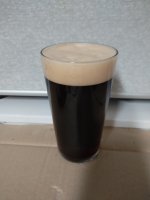Michele Craft
Well-Known Member
- Joined
- Dec 4, 2019
- Messages
- 133
- Reaction score
- 39
So... Got the 4 tap kegerator up and running just before memorial day with only 3 kegs. Poured a beer this past Friday with no problems. Earlier in the week, I had kicked the one sixtle that we immediately untapped and pulled out after we shut off that output on the manifold. So far we've gone thru a full sixtel, half of another sixtel and about 1/3 of a quarter keg. Today we went to dismantle it to move it to the basement in its permanent home and I didn't think to look at the co2 regulators (5lb tank) before I untapped the 2 remaining kegs. Just looked now thinking that since I shut off the co2 lines on the manifolds before untapping each keg (we have 2 3 port manifolds and a dual body regulator so 3 gauge, tank, and 2 output regulators) we should be fine but I never shut off the tank and I'm reading zero on the tank gauge.
I thought shutting off the outputs at the manifolds would be enough but maybe not? We didn't hear anything either today or when we untapped the first kicked leg (which again, happened before my pour on Friday) but.... Or is it more likely I have a leak somewhere? It must be a darn slow leak since it's been fine for 3 weeks and in 4 days is done? All ball lock posts on the keg side and again, all manifold outputs were off before untapping.
Also I sprayed all connections with star San in setup thinking I'd avoid leaks
I thought shutting off the outputs at the manifolds would be enough but maybe not? We didn't hear anything either today or when we untapped the first kicked leg (which again, happened before my pour on Friday) but.... Or is it more likely I have a leak somewhere? It must be a darn slow leak since it's been fine for 3 weeks and in 4 days is done? All ball lock posts on the keg side and again, all manifold outputs were off before untapping.
Also I sprayed all connections with star San in setup thinking I'd avoid leaks
Last edited:




